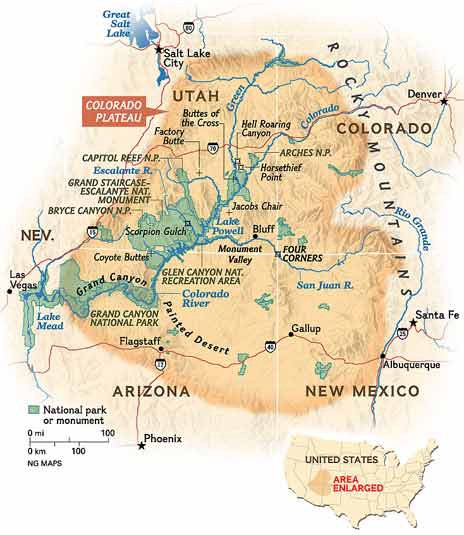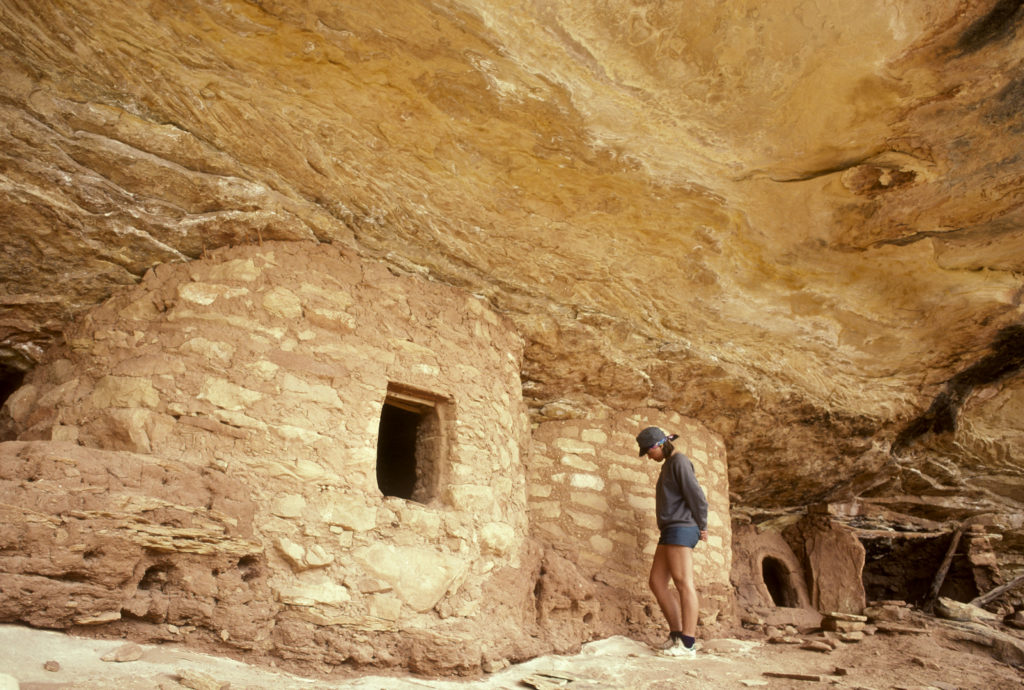 Reimagining Recreation
Reimagining Recreation
Over the past decade, the rapid expansion of non-motorized recreation on Utah’s public lands, including hiking, mountain biking, backpacking, camping, hunting, and horseback riding, has resulted in increasingly adverse impacts to wilderness values, wildlife, visitor experiences, and natural and cultural resources.
Yet no federal land management agency has conducted a comprehensive review of these impacts, much less made plans for how to address them. Instead of a proactive management strategy, the federal land management agencies are playing whack-a-mole, resulting in piecemeal, temporary, and wholly unsatisfactory outcomes.
A new report, Outdoor Recreation and Ecological Disturbance, A Review of Research and Implications for Management of the Colorado Plateau Province, synthesizes more than 60 years of published scientific research to identify the environmental impacts of non-motorized recreation on the Colorado Plateau. Crucially, it also recommends specific management strategies to accommodate growing recreation demands while maintaining ecological integrity.
The report was authored by Dr. Christopher Monz, a professor of Recreation Resources Management in the Department of Environment and Society at Utah State University. His research specialty is recreation ecology, with a focus on the integration of biophysical science, soil science, and park planning approaches, which makes his research and analysis in this report particularly relevant. Dr. Monz has considerable experience leading environmental and recreational research at the national level with the National Science Foundation, USDA Forest Service, National Park Service, US Fish and Wildlife Service, and others.
Based on the findings and recommendations of the report, SUWA is calling on the Bureau of Land Management (BLM) in Utah to:
- Implement a broad, landscape-level zoning strategy for recreation planning and management—A focus on proactive planning that delineates “frontcountry” and “backcountry” management zones, with additional zones as needed, allows land managers to analyze and define use patterns and user expectations. That, in turn, guides them in setting clear goals, objectives, and management prescriptions for each zone. This is not a new strategy and has been successful on public lands in Utah.
- Focus development near communities—Development and expansion of trails, camping and parking areas, information kiosks, restrooms, and other recreation-related infrastructure in frontcountry areas near communities minimizes adverse impacts to fragile backcountry landscapes and wildlife habitat while supporting economic development and providing a variety of recreational opportunities. Still, frontcountry areas can and should provide a large degree of naturalness.
- Limit motorized vehicle access into backcountry areas—Motorized access is a primary factor in determining the location and level of recreation use, and correlates with intentional and unintentional damage to natural and cultural resources. Smart travel management planning protects wildlife, cultural resources, and wilderness values while still allowing for reasonable access.
While congressionally-designated wilderness protections are our ultimate goal, we urgently need the BLM to begin doing its part to manage for human-powered recreation in a way that is sustainable, inclusive, and equitable. This requires comprehensive, proactive planning that protects undisturbed landscapes while accommodating increased demand and providing meaningful experiences.
We want to hear from you! Take action by signing the petition and sharing your story:
Non-Motorized Recreation & Environmental Impacts
According to the report, the environmental impacts of non-motorized recreation can be substantial and long-lasting. They include
- Soil compaction and erosion, and destruction of cryptobiotic soil crusts
- Vegetation destruction, compositional changes, and the spread of noxious weeds
- Destruction of cultural artifacts and landscapes
- Wildlife habitat fragmentation, direct disturbance and displacement of wildlife, and creation of food attraction behaviors and dependencies
- Degradation of streams and riparian areas
- Water, air, noise, and light pollution
To minimize these impacts while also meeting increasing public demand for recreation opportunities, the report recommends that land management agencies such as the BLM
- focus growth and expansion of recreation use in frontcountry areas (where trails and facilities are already developed)
- protect and minimize development of less-impacted backcountry areas, because the majority of impacts occur as a consequence of initial use (additional use, even at high levels, results in minimal additional impacts)
As the report states, “unused locations are the most precious and fragile, and thus should be intensively protected and managed to avoid the proliferation of impacts.”

Key findings and management recommendations in the report include the following:
- “Future management of public lands will have to be proactive in order to accommodate a likely continued increase in demand while also protecting the natural landscapes visitors seek.”
- “Frontcountry and backcountry areas present different management challenges due to the sensitivity of the landscape and visitor expectations. With this in mind, land managers should distinguish between frontcountry and backcountry areas and manage those areas accordingly.”
- “Activity types and behaviors that result in expanding recreation use from concentrated, high-use areas to new, less visited and undisturbed locations are perhaps the most serious consideration.”
- “Concentrating visitor use in previously impacted or hardened sites and trails will likely be a successful management strategy, while dispersal strategies may result in a proliferation of recreation disturbance.”
The Future of Public Lands Management

Unfortunately, the BLM’s recreation strategy has been one of reaction and dispersal. Instead of directing recreationists to existing frontcountry sites, and improving those sites’ trails and infrastructure, the agency is intent on pushing use into previously quiet, less-used backcountry settings, resulting in a proliferation of harmful impacts across Utah’s sensitive landscapes along with diminished visitor experiences.
To maintain healthy functioning ecosystems, preserve biodiversity, and mitigate impacts from climate change, we need to protect large landscapes that connect ecosystems and wildlife habitat. It’s time for the agency to take a step back and proactively manage non-motorized recreation in a comprehensive and holistic way that protects existing, undisturbed landscapes while accommodating increased demand and providing meaningful recreational experiences.


